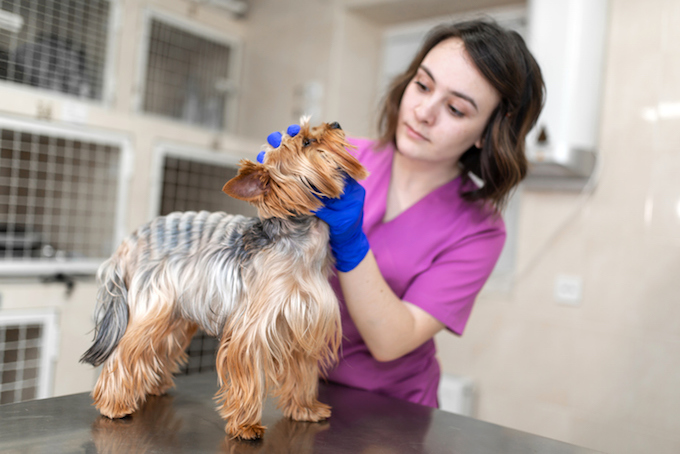Liver inflammation (granulomatous) in dogs is a condition that is usually caused by an infection. The condition causes the liver to become inflamed.
Thankfully, the condition is quite uncommon in dogs. Although, unfortunately, dogs of all ages and breeds can develop it.
Technically, the condition is also known as granulomatous hepatitis in dogs.
If you see the signs of the condition in your dog, then get to a veterinarian for a proper diagnosis and treatment.
Here’s what you should know about the symptoms, causes, and treatments for the condition.
Symptoms of Liver Inflammation (Granulomatous) in Dogs
The condition produces a wide range of symptoms. For example, some of the most common symptoms include:
- Diarrhea
- Weight loss
- Peeing more than usual
- Stomach pain
- Fever
- Drinking more water than usual
- Loss of appetite
- Jaundice
- Acting lethargic
- Vomiting
Causes of the Condition in Dogs

The cause of the condition is often a fungal or bacterial infection. For example, some of the most common infections include:
- Bartonella
- Histoplasmosis
- Systemic mycosis
- Tuberculosis
- Blastomycosis
- Coccidioidomycosis
- Brucellosis
Additionally, the following factors can also cause the condition:
- Neoplasia
- Parasites
- Immune diseases
- Reactions to drugs
Finally, the cause of the condition can also be idiopathic. This means that the cause is unknown.
Treatments for the Condition in Dogs
Firstly, your vet will ask about your dog’s symptoms. Secondly, your vet will ask about your dog’s full medical history.
Thirdly, a full physical examination will be carried out. Blood and urine tests will be taken. The subsequent results will look for problems with your dog’s red blood cells, liver enzymes, and glucose levels.
Additionally, abdominal x-rays can help to diagnose the condition. Also, liver tissue samples can be taken.
Unfortunately, in some cases treatment means a stay in hospital. This is so that your dog can receive intravenous fluid therapy. Additionally, nutritional support will be given.
Ultimately, the underlying cause of the condition will be targeted. For instance, medication can be prescribed. As always, if your vet prescribes your dog any medicine, make sure to stick to the correct dose and frequency instructions. Also, complete the full course of medicine.
Have you ever cared for a dog who suffered from this condition? How did your vet help your dog recover? Let us know in the comments section below.




